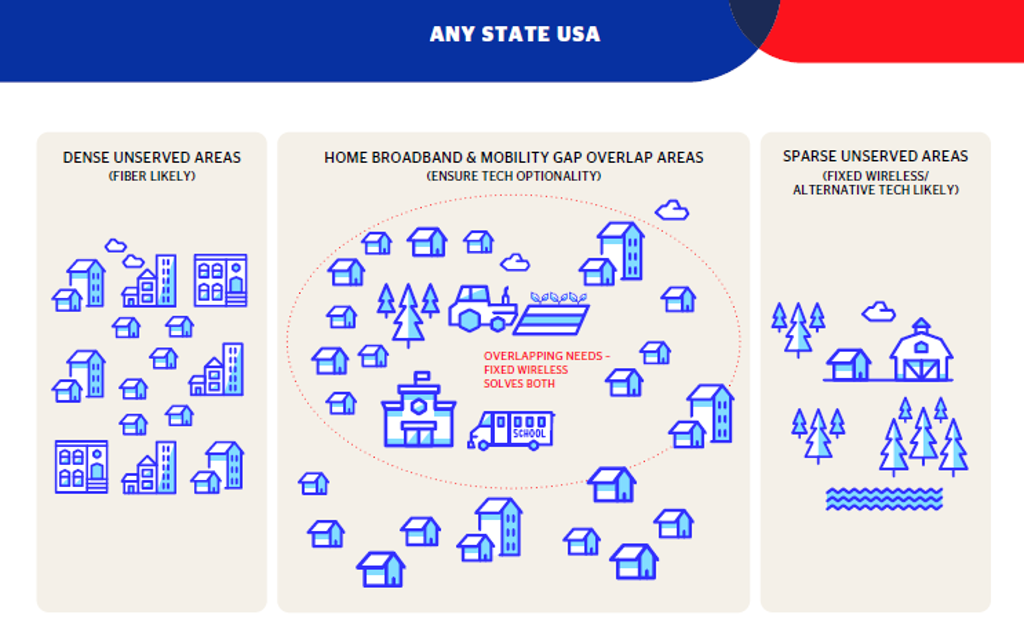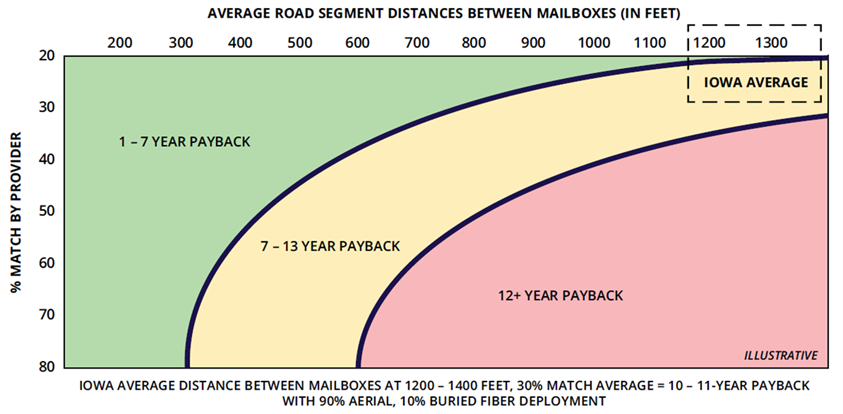Connectivity for All is Achievable with an “All of the Above” Approach
Recently, I had the pleasure of participating in CTIA’s 5G Summit. At the summit, a few industry experts were already talking about 6G. While it is important to look ahead, UScellular agrees with CTIA that the key to innovation in the next generation of wireless begins with a solid 5G foundation. Now is the time to use the advances in 5G to close the digital divide so that all of America can participate in the growing digital economy. That goal is within reach.
At UScellular, our mission is to connect people to what matters most. We do so primarily in areas that are financially, technically, and topographically difficult to connect. We serve a population that is 41% rural and, though we cover the spectrum of rural to urban, the largest city in our footprint is Milwaukee.
The main lesson that we have learned in connecting rural America is that a range of technologies is needed to bring reliable connectivity to the areas that are hardest to connect — we must think in terms of “and” instead of “or.”
Thinking in terms of “and” means deploying fixed wireless (FWA) now to complement a fiber network where the last mile would take 7-10 years to complete. It means installing buried fiber as far out as you can but, when there are long distances between homes or you hit rocky terrain, using aerial fiber or FWA to bridge the gap. It means understanding that the terrain may not allow you to evenly space out poles for aerial fiber, which is likely to cause it to break more often, and pivoting to FWA instead. It means deploying satellite technology to very remote areas. It also means investing in wireless while we invest in wireline — no American wants to have to choose between one or the other.
Conversely, we must stop thinking that there are hard choices between wireline or wireless, fiber or FWA, urban or rural. The goal of connectivity for all is achievable if all of us — regulators, industry, academia, and government officials — commit to thinking in terms of “and.”
Thomas Revels, broadband manager in rural Grayson County, Va., drove this point home when he joined me in a panel discussion at CTIA’s 5G Summit. Thomas said: “I hope the people in [DC] that are making these decisions [about broadband funding] will take into account how behind rural America is and give us the flexibility to solve our connectivity issues in the ways that will address our unique needs.” We must listen to Thomas and his colleagues. They know where the investment case and terrain have made prior attempts at deploying broadband untenable, and they know where one solution will work but not another.
Thomas’ county is like the one in the middle of the following schematic — like most of “any state,” his county has a medley of challenges and needs for connectivity. For example, fiber will work in some places while FWA will make more sense in others. FWA is particularly effective in places where there is a broadband gap that overlaps with a mobility gap because FWA addresses both gaps at once.

For counties like Thomas’ and the many others with un- and under-served populations across the United States, having technological optionality will help ensure that NTIA’s Broadband Equity, Access, and Deployment (BEAD) program is a success.
UScellular has partnered with inCode, a division of Ericsson, to assess what it will take for all of us to work together to make BEAD a success. Here are some key learnings:
- Many states’ allocations will yield a significant funding shortfall. For example, using the data available as of June 30, 2022, and taking inflation into account, Iowa is forecasted to have a nearly $400 million shortfall if state officials select a fiber-only approach to cover un- and under-served locations.
- This is underscored by some recent state funding awards for fiber deployment in rural America, which have allocated more than 2x the amount per household passed than estimated by some recent studies. For example:
- Missouri awarded an average of $7,350 per household passed.
- Virginia awarded an average of $6,394 per household passed. - In states where there is a funding shortfall, states need flexibility to deploy whichever technology is going to get everyone connected in a timely manner.
- Finally, most other studies have assumed that states will be able to lay aerial or buried fiber in a straight line. That assumption is not what typically happens in rural America:
- Distances between locations, topography, and the use of certain terrain — for farming, cattle raising, etc. — means that fiber often is laid to cover the physical mailbox-to-mailbox distances in rural America.
- A plan that does not take that into account will end up leaving many behind.
The graph below tells the story of what the financials would look like in Iowa, as an example, to deploy mailbox-to-mailbox fiber that is 90% aerial, assuming a 30% match by the carrier.

Based on the above, here is what “and” looks like in a typical area of a county that requires a mix of technologies to get everyone connected:

And here is a zoom that shows that the state would have to spend an incremental $62,500 to reach the next location with fiber when taking mailbox-to-mailbox distances into account:

As we all have been reminded of in recent years, technology is the great equalizer. If you have access to technology, you have access to healthcare, education, work opportunities…the list goes on. I hope that these data points are helpful to you as you think about how to amplify your efforts to bridge the digital divide.
We can get all people, homes, and businesses connected — whether they are urban or rural, dense or sparse, rich or poor. We can. We just have to use an “and” mentality to get there.
May 24, 2023
